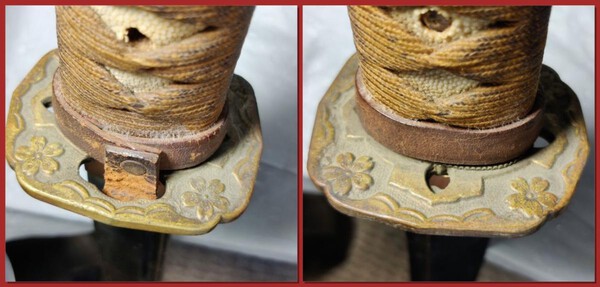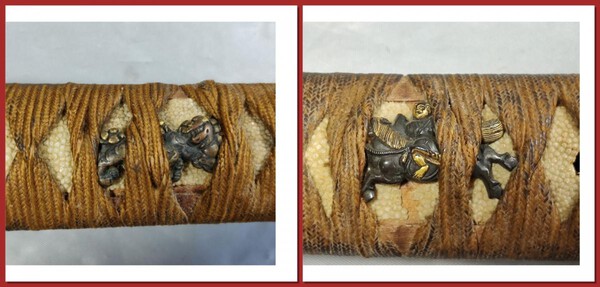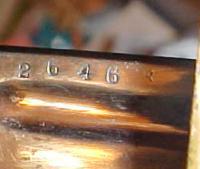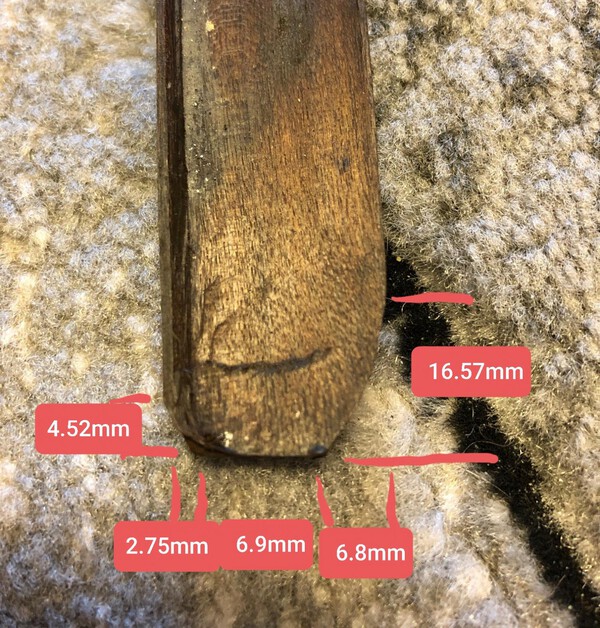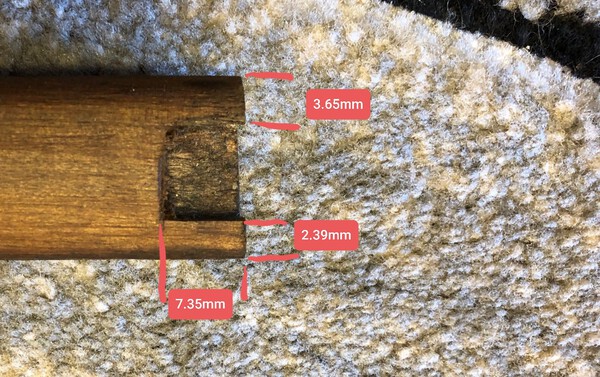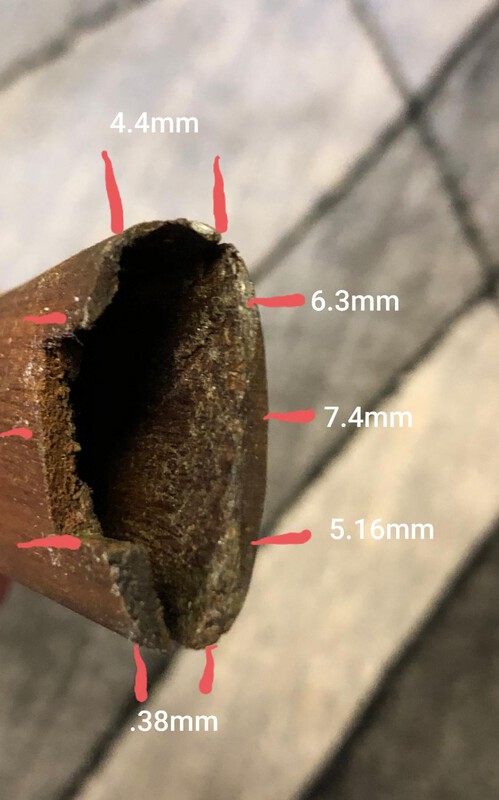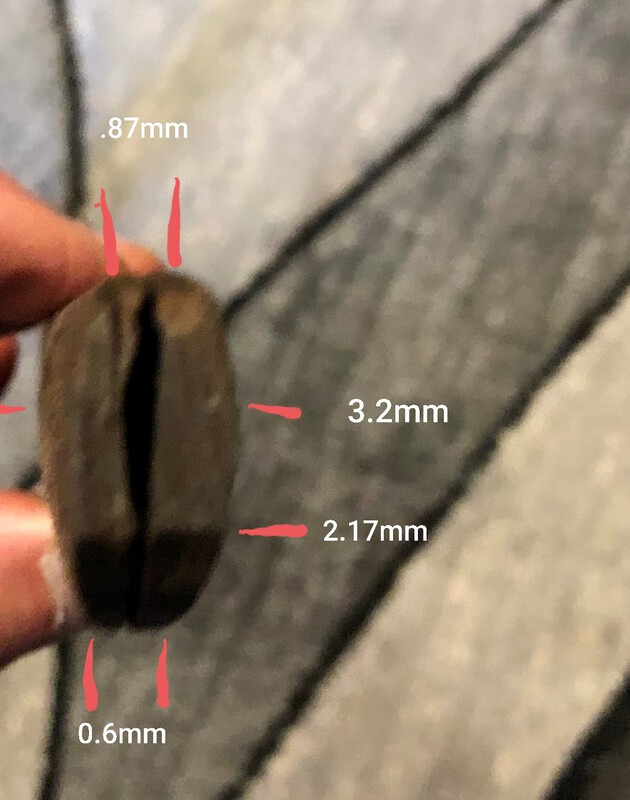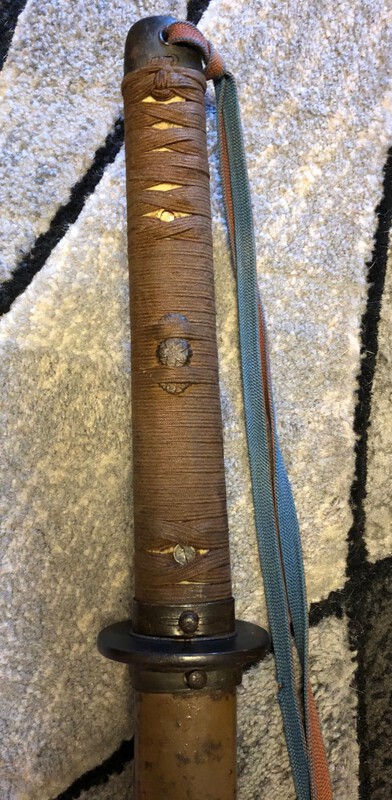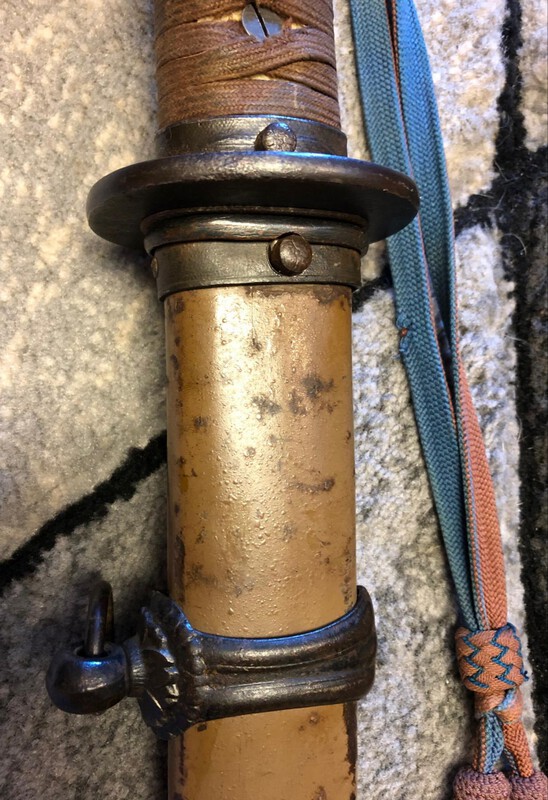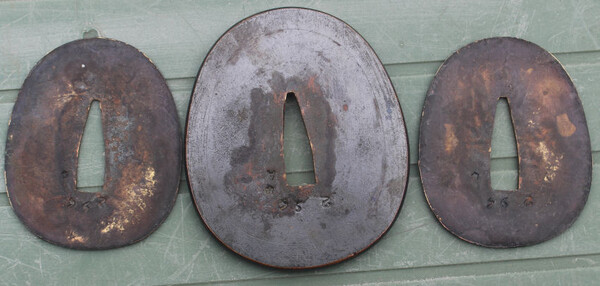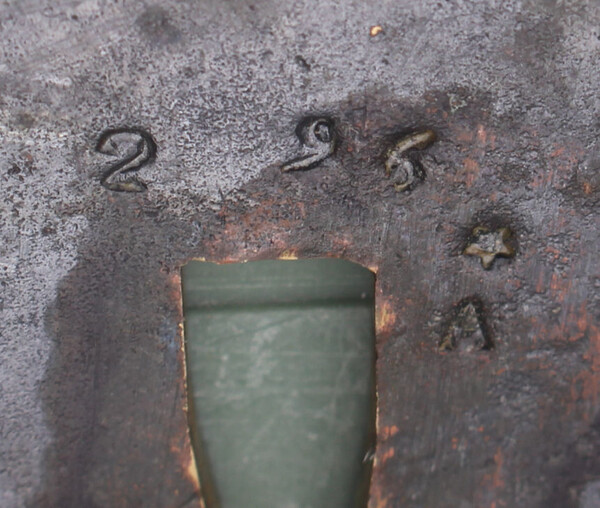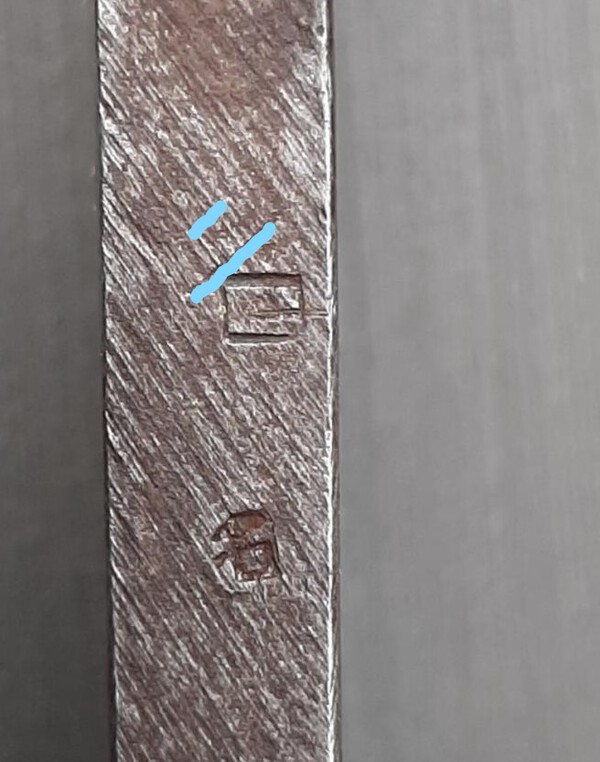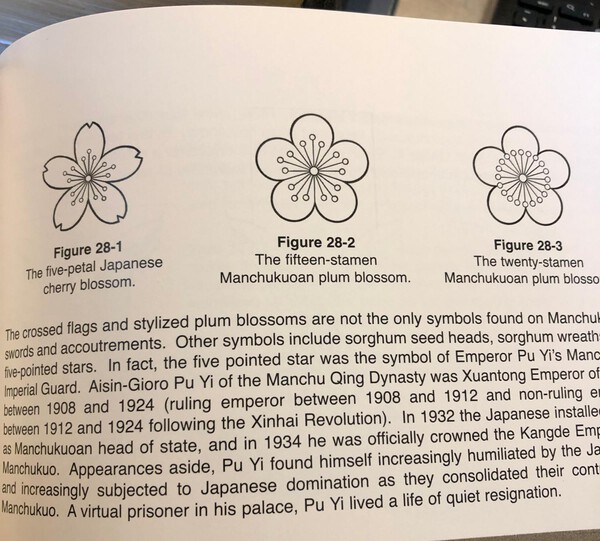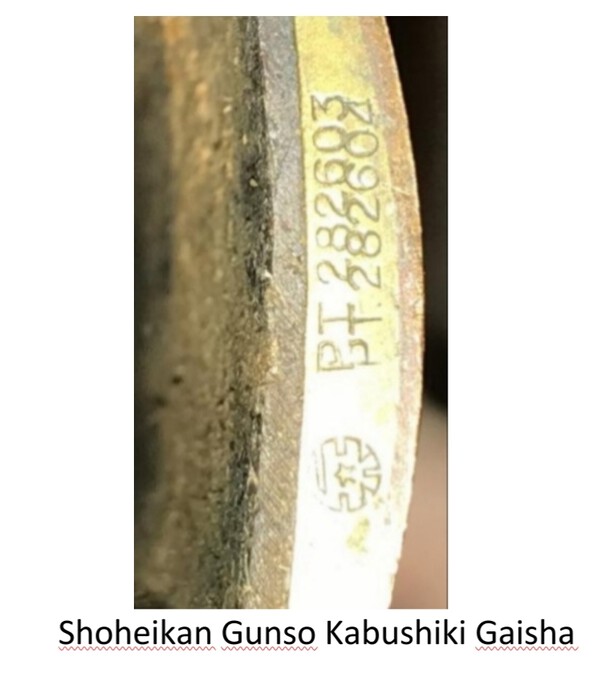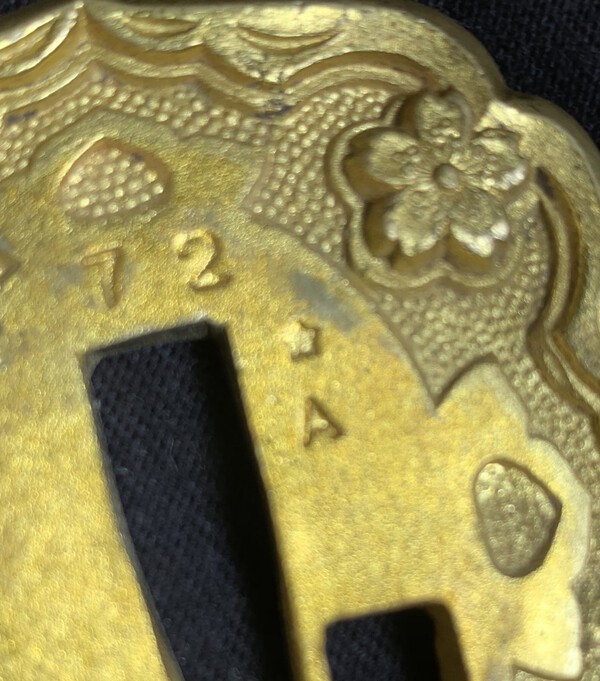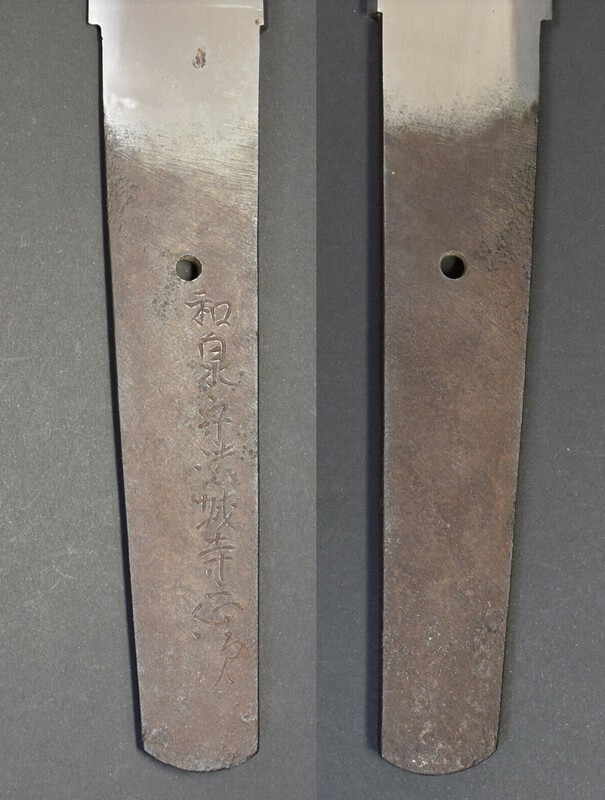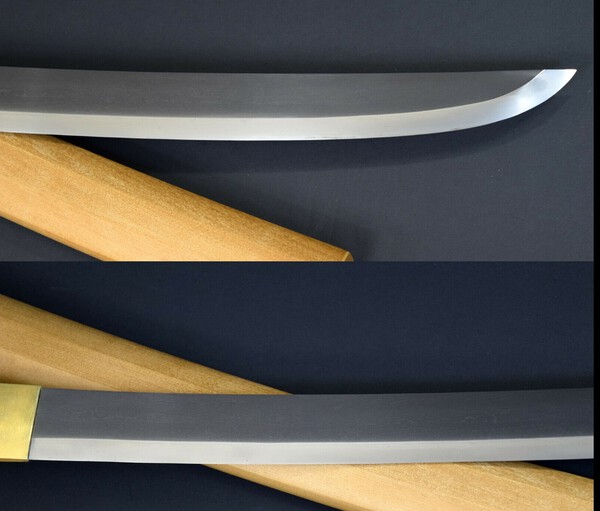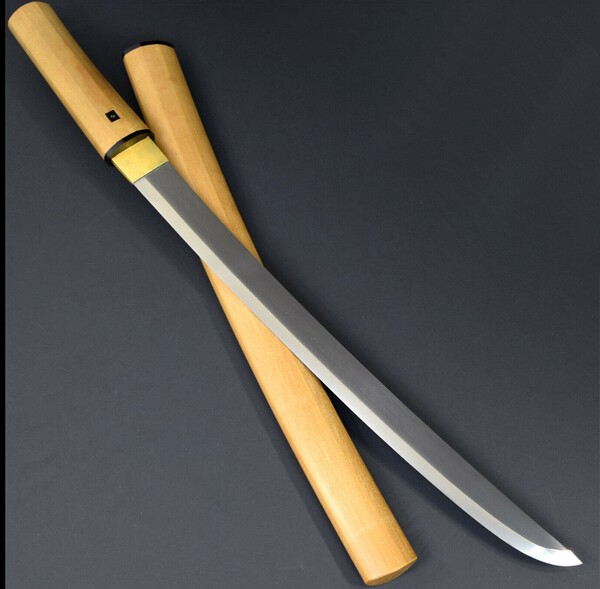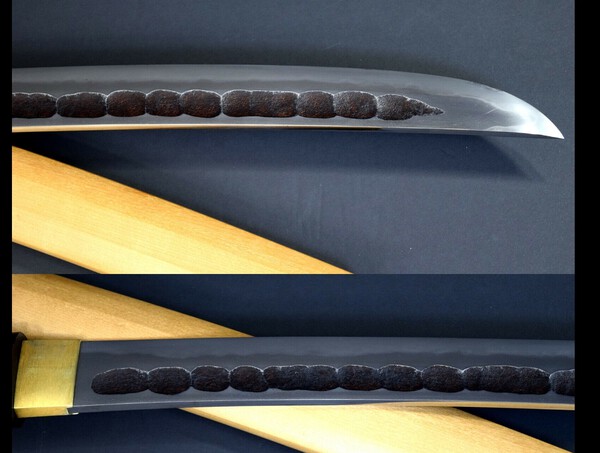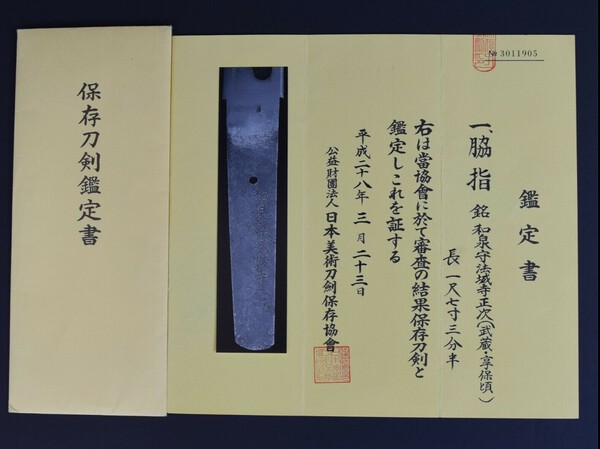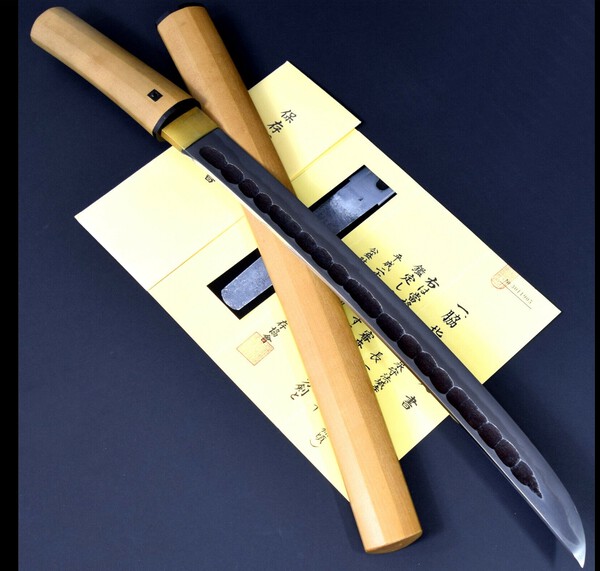-
Posts
13,042 -
Joined
-
Last visited
-
Days Won
155
Content Type
Profiles
Forums
Events
Store
Downloads
Gallery
Everything posted by Bruce Pennington
-

Need help with date and stamp
Bruce Pennington replied to Itomagoi's topic in Translation Assistance
That's interesting! It is in the right place for a star stamp. All other stamps are normally found on the upper right of the ana. There has been confusion about the star for decades, and many felt is was just another mandated stamp indicating "non-traditionally made". So, there have likely been several removed over the years because of that misconception. My main source concerning the stamp is Chris Bowen, who stated: "Regarding the star stamp and its use, Rikugun Jumei Tosho, and whether or not these are traditionally made or not, modern research has shed a great deal of light and shown that in general star stamped blades were traditional in both materials and manufacture. There has been a great many falsehoods perpetuated in Japan, and elsewhere, as concerns these blades in the past. We know better now... Chris Bowen 鐵會 Tetsu Kai" -
Robinson, welcome back! I'll let the Nihonto guys help you with your old blade, but I'd like to address a couple things you mentioned about your showato. Calendar - I'm wondering where your confusion is coming from on the month. According to what I've read, the Japanese switched to the Gregorian calendar in 1873. Even when considering their use of a Fiscal Year in factory/arsenal documents, the months were still the same as ours. So "One" month is January, like on your blade. Stamps - over the years, there are some who have argued that a Seki, or regional stamp, could have been simply been like a guild mark and had no statement about how it was made. But the majority of what I read is that simply wasn't the case in WWII. In fact, it is widely known that some people would have a polisher remove the stamp, because it denoted a non-traditionally made blade and they wanted to get more money out of the sale. With the stamp missing, they could claim "gendaito" and ask more for it. You haven't shown us the blade. Asking us whether it could be traditionally made, without showing us the blade, is like asking us if your Ford Cobra is real or a replica without showing us the car. Sometimes it's hard to say, even with pictures, but sometimes it is obvious.
-

"Weed Whacker" Katana Translation help?
Bruce Pennington replied to JeffreyM's topic in Translation Assistance
Jeff, Nobody has mentioned it yet, but do yourself a favor an never touch the blade with your bare fingers. The skin oils can make permanent stains. Be sure to wipe the blade with a soft cloth and a light oil. You can buy blade maintenance kits that come with a great smelling oil, pretty cheap. Here is a page on general blade care: http://japaneseswordindex.com/care/handling.htm -
Here's one that isn't quite the same, but it's quite thin and resembles this in certain ways. It seems half-way between the OP example and a standard tsuba. It's on a civil blade mounted for the war. Here: https://www.wehrmacht-awards.com/forums/forum/ken-jasper-international-militaria-forums/Japanese-militaria-forum/11682681-ww2-Japanese-samurai-sword
-

Help With Miyaguchi/ikkansai Kunimori Please
Bruce Pennington replied to Navymate's topic in Military Swords of Japan
My 2 cents - the stamping of non-traditional blades, didn't really kick in in a big way until December of 1940. There were many non-traditional blades made prior to that which never got stamped. Blades can be found prior to that with stamps, but they are few in number. -

"Weed Whacker" Katana Translation help?
Bruce Pennington replied to JeffreyM's topic in Translation Assistance
Jeff, There were private purchace swords made during the war, not used for the war. This seems to be one of those. The "why" and "what's next" really depend on your interests. All collectors have their own reasons for collecting, and often have certain specialties they collect - WWII military, ancient nihonto, some follow certain smiths, some love the fittings, etc. I see you are already into martial arts, so you already have a respect for fighting skills, precision, discipline, honor. You'll find all of that and more in the history and craftsmanship of Japanese sword-making. Or maybe you won't get hooked. But you are asking the questions so I suspect you're already in! Prowl around the some of the forums, maybe you'll see something that catches your interest: Nihonto: http://www.militaria.co.za/nmb/forum/3-nihonto/ Military: http://www.militaria.co.za/nmb/forum/45-military-swords-of-Japan/ Fittings: http://www.militaria.co.za/nmb/forum/4-tosogu/ Excellent free education at Ohmura's site: http://ohmura-study.net/900.html and at the Japaneseswordindex: http://japaneseswordindex.com/nihonto.htm -

Wooden Insert For Nco Gunto Scabbard
Bruce Pennington replied to BANGBANGSAN's topic in Military Swords of Japan
-

Star Stamped Tsutsui Kiyokane Blade
Bruce Pennington replied to cisco-san's topic in Military Swords of Japan
-

Iwo Jima Shin Gunto? (help with sword smith)
Bruce Pennington replied to zook's topic in Military Swords of Japan
Nice to see it still has the leather locking strap with snap! Those almost never survive and are lost. Can't tell much about the blade from the picture, but likely non-traditionally made showato. Could be wrong though. If you have it in hand, you might be able to make that call better. Blade doesn't seem too bad off. -
Karen, Welcome to the Club! We'd love to hear the story behind your gunto - how did you come about owning it? Is there a story between you and the war? etc. Kiipu is correct. Called a Type 95 NCO gunto (army sword). Amazingly, only 3 numbers from my own, 2643! The model was commissioned in 1935. This first version, with copper handle and office-styled saya (scabbard) was made for less than a full year (working from memory - late 1937 to July '38). Just a few more than 6,000 produced. You can read about them here: http://www.warrelics.eu/forum/Japanese-militaria/ija-type-95-nco-sword-info-228172/ http://www.warrelics.eu/forum/Japanese-militaria/short-development-history-type-95-gunto-676112/ and http://ohmura-study.net/957.html
-
Adam, I think it's cool, and valuable, that you have taken a wartime smith to study his work! I hope you can attract the corporate knowledge of the community and compile it for reference. I know nothing of nihonto. I would have looked at that beautiful hamon and assumed it was traditionally made, but for the stamp (Showa?). If you had enough examples collected, you could see if there was a quality change over time. The Showa-stamped blade is 1941 or earlier, and Neil's Seki-stamped blade is 1941 or later. Any claims made by The Monkey can be dimissed outright (he may be correct, but he tampers and lies so much that his word is worthless). You are right about the saya. It would have originally had a leather cover. Many of them were damaged and lost.
-

Need help with date and stamp
Bruce Pennington replied to Itomagoi's topic in Translation Assistance
It seems that RJT blades almost always have two stamps on the mune, Maybe the higher quality standards required to inspections. -
-

Need help with date and stamp
Bruce Pennington replied to Itomagoi's topic in Translation Assistance
Yes, March 1943. This threw me at first, but I think what we are seeing is an attempt to make a "Na" by hand. I've attached close-ups side-by-side. -
I ran it by Chris Bowen, and he says it's new to him as well.
-
I doubt he will find that exact pattern though.
-
No, you are on the leading edge of a new discovery! Neil‘s example was the first I had ever seen, and yours backs it up. Now we just have to find out who was making them.
-
For reference, and for new guys learning to spot fakes, I thought I had come across a sukura like the one above, but it turns out it was a Manchukuo plum blossom. So, it looks like the faker in this example is using plum blossom imagery in his head when trying to craft the cherry bloom. The one on the right is what this reminded me of. You can see the faker got the petals right, but used plum-blossom stamen.
-
I no longer have the earlier F & G edition that Doug references in his item description (just re-ordered!), but the pattern looks more like a police pattern than an Imperial court style. Maybe even a diplomat. Peter, how in the world did you find those examples?
-
Wow, that is identical, even with the "A" under the star! The numbering looks more precise on Neil's example, yet the style of the "2" seems the same on both. Could be the same sword shop. I can't imagine that it's an arsenal inspector's mark, since we have both army and navy here. We've seen arsenal marks on fittings - "東" and "名" - but nothing of joint-use that I can recall. There is a shop known to have made both army and navy fittings, and they even have a star in the center of their logo. I don't know that we can associate the two with this shop as we have an example of their logo in use and they use the whole image, not just the star. We do have an example of a shop that only uses the center of the logo for their stamps, though, so it is possible.
-

The Mysterious "w" Stamp!
Bruce Pennington replied to Bruce Pennington's topic in Military Swords of Japan
Could we get a photo of the number on the nakago? Also, we could use a name. You can set one that appears at the bottom of each post in your settings. https://youtu.be/pre5EXnhGE0 -

Mauser C96 With SMR Railway Stamp?
Bruce Pennington replied to Bruce Pennington's topic in Tanegashima / Teppo / Hinawajū
I agree John. There were many other railways, so this could have been for any of the others. I doubt SMR would have permitted an image like this for their opereation. -
Grev, I've only seen this once before. Neil (IJASWORDS) owns it. Could we get a photo? Might want to start tracking this in hopes of figuring out it's meaning. My initial reaction is that it's a shop logo/mark. Here's his, and it's on an IJA tsuba.
-



